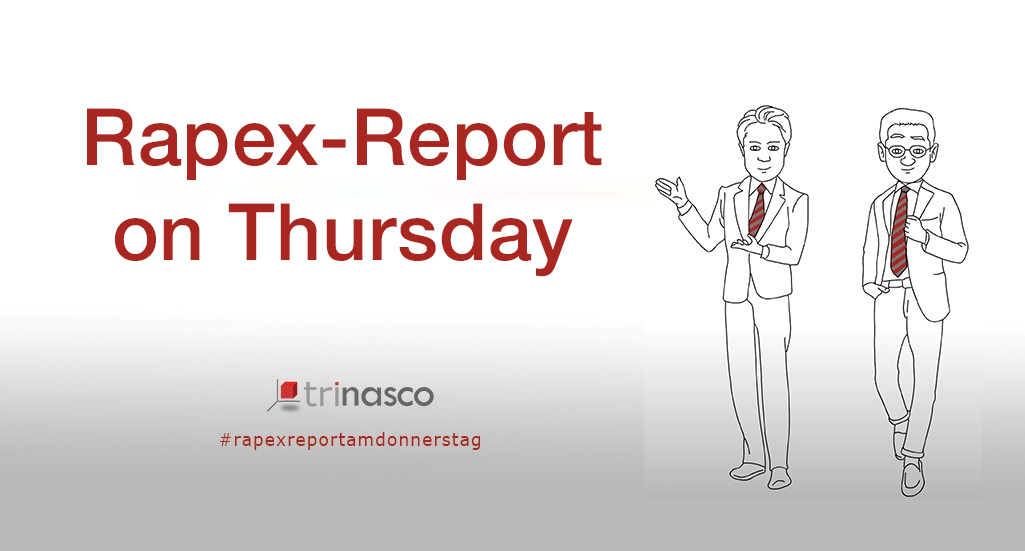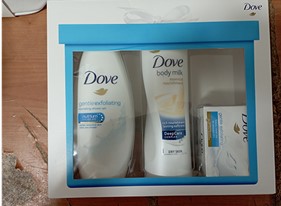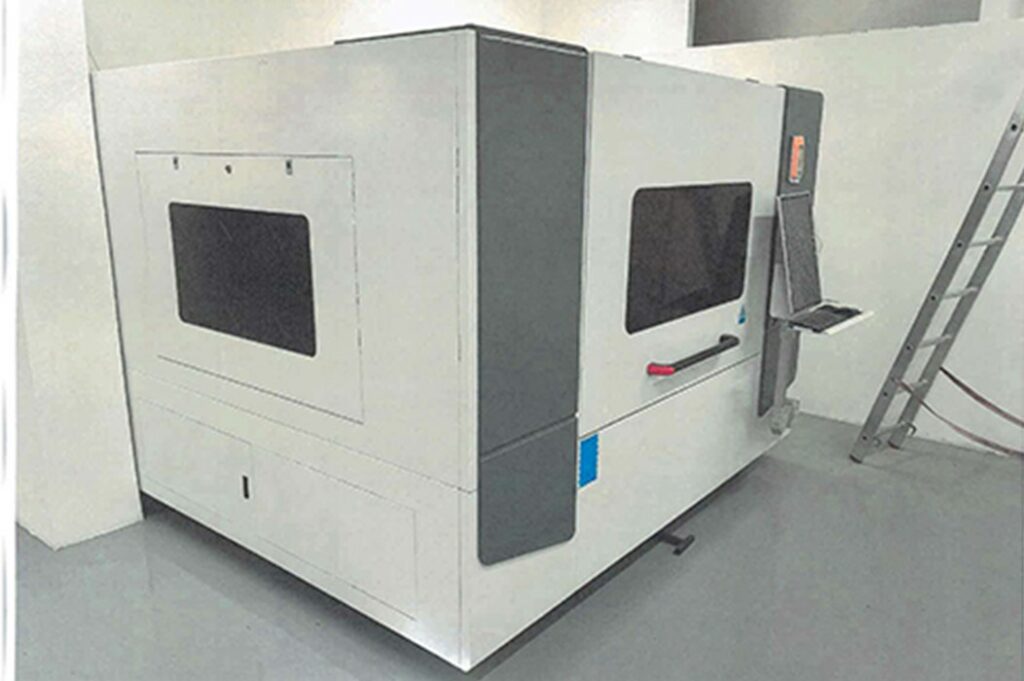
In July, more than 280 dangerous products were once again listed on the European Union’s Safety Gate. This information portal, also known as the RAPEX system, allows market surveillance authorities in the member states to share information about dangerous products. When a product is classified as dangerous and reported in one member state, the authorities in other member states can take corresponding measures or even stop the product at the border.
Nearly every second flagged product in July belonged to the cosmetics category (47.3%), followed by toys (12.4%) and motor vehicles (11.3%). Additionally, over 20 machines and string lights were subject to sales bans or product recalls by the authorities.
With a share of 35%, more than one in three dangerous products originated from China. All flagged toys and string lights came from the People’s Republic. Due to the high proportion of cosmetics, Italy ranked second among the countries of origin, with 14.8%. The remaining products were evenly distributed across 19 other countries of origin.
Almost half of the products (44.9%) had to be recalled by the responsible manufacturers, importers, or distributors. This figure is comparable to that of the previous month, highlighting the significant financial consequences that can arise from insufficient product safety and non-compliance. In July, only 13% of the flagged products were sold online.
Due to the focus on cosmetics, most of the products were again reported by the Italian market surveillance authorities in July, followed by Hungary and Germany.
Products that do not comply with EU regulations can have catastrophic consequences for companies. A study by Allianz shows that the costs for recalls of electronic devices or toys can range between €650,000 and €1,000,000.
Even for medium-sized shipments, import bans can result in expenses ranging from €50,000 to €100,000, further compounded by penalty payments to customers. In addition to the enormous financial burdens, there is a significant risk that the reputation of manufacturers, importers, or retailers could be severely and permanently damaged.
By implementing effective compliance strategies, companies can significantly reduce the likelihood of product or labeling errors and identify potential risks at an early stage. Comprehensive documentation not only proves compliance but also enables a quick and efficient response in the event of recalls or import delays.
Regular spot checks ensure that products are continuously reviewed for their compliance with applicable standards. We strongly advise our clients to actively invest in their compliance strategies. Only in this way can they protect themselves from the serious consequences that may arise from non-compliant products.
In July, cosmetics once again topped the list of dangerous products with 134 reports. According to the respective ingredient lists, 132 of the flagged products (98.5%) contained 2-(4-tert-butylbenzyl) propionaldehyde (BMHCA), a substance banned in cosmetic products. BMHCA can damage the reproductive system, harm the health of an unborn child, and sensitize the skin.
As in previous months, the Italian and Hungarian market surveillance authorities led the investigations, reporting nearly 90% of the dangerous products. Thirty-nine of the dangerous cosmetics came from Italy, with another 35 from Poland and the United Kingdom.
The brand Dove was particularly affected by sales bans and recalls, with a total of 17 products flagged. Fourteen products were subject to sales bans, and three must be recalled from consumers.

Fig. 1: Cosmetics series of the Dove brand with product recall
Source: European Commission, https://ec.europa.eu/safety-gate-alerts/screen/webReport/alertDetail/10013781?lang=de, date: 5.08.2024, language: German
In July, 35 dangerous toys were once again listed on the Safety Gate, primarily reported by French, German, Polish, and Czech market surveillance authorities. All flagged products originated from China, with 20% being sold online.
The main risk categories were chemicals and environmental hazards at 51.4%, choking (including other risks) at 34.3%, and burns (including fire) at 11.4%.
The painting set of a finger painting kit for children, primarily sold via Wish, contained small parts (the foam pieces of the ink) that could easily come loose. Small children could put them in their mouths and choke.
Additionally, the product had an excessive concentration of a mixture of the preservatives methylchloroisothiazolinone and methylisothiazolinone (MCI/MI) (measured values: 0.00008% and 0.00011%). MCI and MI cause severe skin burns. Furthermore, the plastic bag of the packaging was too thin. If a child plays with it, the plastic could cover their mouth and nose, causing suffocation.
Thus, the product posed both chemical and choking hazards and did not comply with the requirements of the Toy Safety Directive or the European standards EN 71-1 and EN 71-7. On the order of the French authorities, Wish must discontinue the listing of the product.

Fig. 2: Fingerpainting kit from Wish
Source: European Commission, https://ec.europa.eu/safety-gate-alerts/screen/webReport/alertDetail/10013738, Date: 5.08.2024, Language: German
In the case of a battery-powered toy phone made of hard, multicolored plastic, Polish market surveillance authorities discovered that the sound pressure level generated was too high (measured value up to 77.9 dB). This can lead to permanent or partial hearing loss.
The product did not comply with the requirements of the Toy Safety Directive or the European standard EN 71-1 and must be removed from the market. Additionally, consumers must be warned about the dangers.

Fig. 3: Toy telephone with excessive sound pressure level
Source: European Commission, https://ec.europa.eu/safety-gate-alerts/screen/webReport/alertDetail/10013672, date: 5.08.2024, language: German
The Finnish market surveillance authorities found that a Pippi Longstocking costume’s wig was highly flammable. A child or user risks burns to the head if it catches fire. The product violated the requirements of the Toy Safety Directive and the European standard EN 71-2.
The product must be recalled by the distributor and destroyed.

Fig. 4: Easily flammable Pippi Longstocking costume
Source: European Commission, https://ec.europa.eu/safety-gate-alerts/screen/webReport/alertDetail/10013963, Date: 5.08.2024, Language: German
German authorities examined various toy slime products and found that six of them had excessive boron migration levels. The measured values ranged from 610 to 1,710 mg/kg. Ingesting or coming into contact with excessive amounts of boron can harm children’s health by damaging their reproductive system.
The products did not comply with the requirements of the Toy Safety Directive or the European standard EN 71-3 and were all rejected at the border.

Fig. 5: Glistening slime with high boron content
Source: European Commission, https://ec.europa.eu/safety-gate-alerts/screen/webReport/alertDetail/10013857?lang=de, Date: 5.08.2024, Language: German
In July, various electronic toys appeared in the Safety Gate that violated the RoHS Directive. In the case of a battery-powered educational toy shaped like a fish, the electronic components were found to have an excessive concentration of lead (measured value up to 84.5% by weight). Lead poses a risk to the environment.
Three products contained not only lead but also cadmium in excessively high concentrations (0.14% by weight). None of the products complied with the requirements of the Directive on the restriction of the use of certain hazardous substances in electrical and electronic equipment (RoHS-2 Directive).
Forty percent of the flagged products must be recalled from consumers by the responsible manufacturers, importers, or distributors, which will involve significant time and financial costs.

Fig. 6: Educational toys with unauthorised lead levels
Source: European Commission, https://ec.europa.eu/safety-gate-alerts/screen/webReport/alertDetail/10013860, date: 5.08.2024, language: German
In the case of six string lights, Czech authorities discovered that the power cord was not securely anchored to the electronic unit and was not sufficiently protected against being pulled out. Additionally, the mechanical strength of the electronic unit was inadequate, and its cover could be easily removed without the use of tools.
As a result, live parts were exposed, and a user could receive an electric shock. In another product, the cable was too thin, which could lead to overheating, potentially causing burns and/or fire. Another product was recommended for outdoor use but was not protected against moisture. Water could enter the product, also posing a risk of electric shock.
None of the products complied with the requirements of the Low Voltage Directive. Seven products were subjected to sales bans or rejected at the border, and one must be recalled from consumers.

Fig. 7: Dangerous string of lights
Source: European Commission, https://ec.europa.eu/safety-gate-alerts/screen/webReport/alertDetail/10013839, date: 5 August 2024, language: German
Somewhat unusually, a laser cutting machine appeared in the European Union’s Safety Gate in July. The machine lacked a fan cover, a protective device for the laser head, and a safety switch for the protective cover. A user could sustain serious injuries while operating the machine.
Additionally, the machine lacked protection from laser radiation, which could cause vision damage to the operator. The control panel of the product was also not properly insulated, the sockets were not equipped with surge protection, and the protective conductor was not connected to the grounding terminal. A user could receive an electric shock from exposed live parts.
The machine from China therefore posed risks of cuts, vision damage, and electric shock and did not comply with the requirements of the Machinery Directive or the European standards EN ISO 12100, 60204-1, 4414, 11553, 13849, 14120, 13850, EN 61439-1, 61310, 60825.
The importer must remove this machine from the market, which will likely require significant time and financial investment for dismantling. Whether the importer can make claims against the Chinese manufacturer will depend on the terms of the supply contracts that were agreed upon.

Fig. 8: Laser cutting machine with high risk of injury
Source: European Commission, https://ec.europa.eu/safety-gate-alerts/screen/webReport/alertDetail/10013665, date: 5 August 2024, language: German
Do you distribute toys, string lights, or machinery?
How confident are you that all risks associated with your products have been fully addressed?
How do you ensure that you are aware of and comply with the latest standards?
Have you conducted a risk analysis for all your products that you can provide to authorities upon request?
Do all your suppliers understand the requirements of the REACH or CLP regulations and the relevant harmonized European standards?
Do you have complete technical documentation for all your products, as required by the new Product Safety Regulation?
Do you have reliable tests and documents from your suppliers regarding the chemical and electrical components of your products?
How well are you prepared for a product recall, and have you implemented a product recall management system?
If you see areas in need of improvement, we are happy to assist you in identifying potential risks and avoiding additional costs caused by dangerous products.
We support you in developing an appropriate risk management system and guide you through the process of conformity assessment, including the creation of technical documentation, risk analysis, and the EU declaration of conformity.
What do we need to do now?
Book our free initial consultation now.
Save €249!!